Top 50 Hottest AI Applications of the Year: Beyond ChatGPT, There Are Many Hidden Gems
-
In a year of numerous AI models and tools, who are the real winners?
ChatGPT leads in visits but falls short in average session duration.
Midjourney ranks fourth in visits but second in decline.
Surprisingly, Stable Diffusion, which ignited the AI art trend, didn't make the top 20?
This industry report, which lists the top 50 hottest AI tools globally, reveals more hidden trends in the AI world.
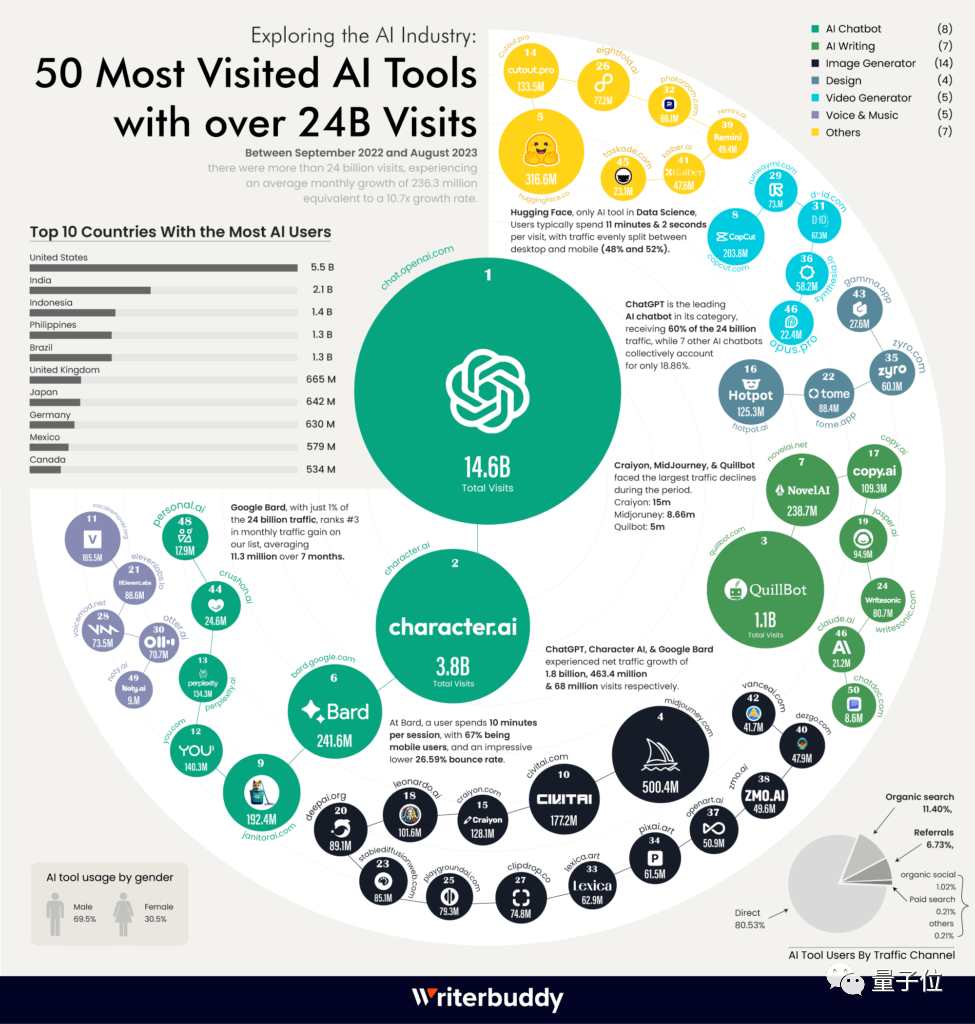
In just one year, the top 50 AI tools globally have created over 24 billion visits, averaging 2 billion visits per month.
ChatGPT alone contributed 14.6 billion visits, accounting for over 60% of the total.
Among the top 50, AI image generation tools were the most represented, with over 63% of users accessing AI tools via mobile devices.
The research organization Writerbuddy analyzed data from more than 3,000 AI tools to arrive at these findings.
What other surprising data points are there? Let's take a look~
ChatGPT is the "Dominator"
First, let's examine the key data points that defined the first year of large models.
The report covers the period from September 2022 to the end of August 2023.
In the specific rankings, the top five are as follows:
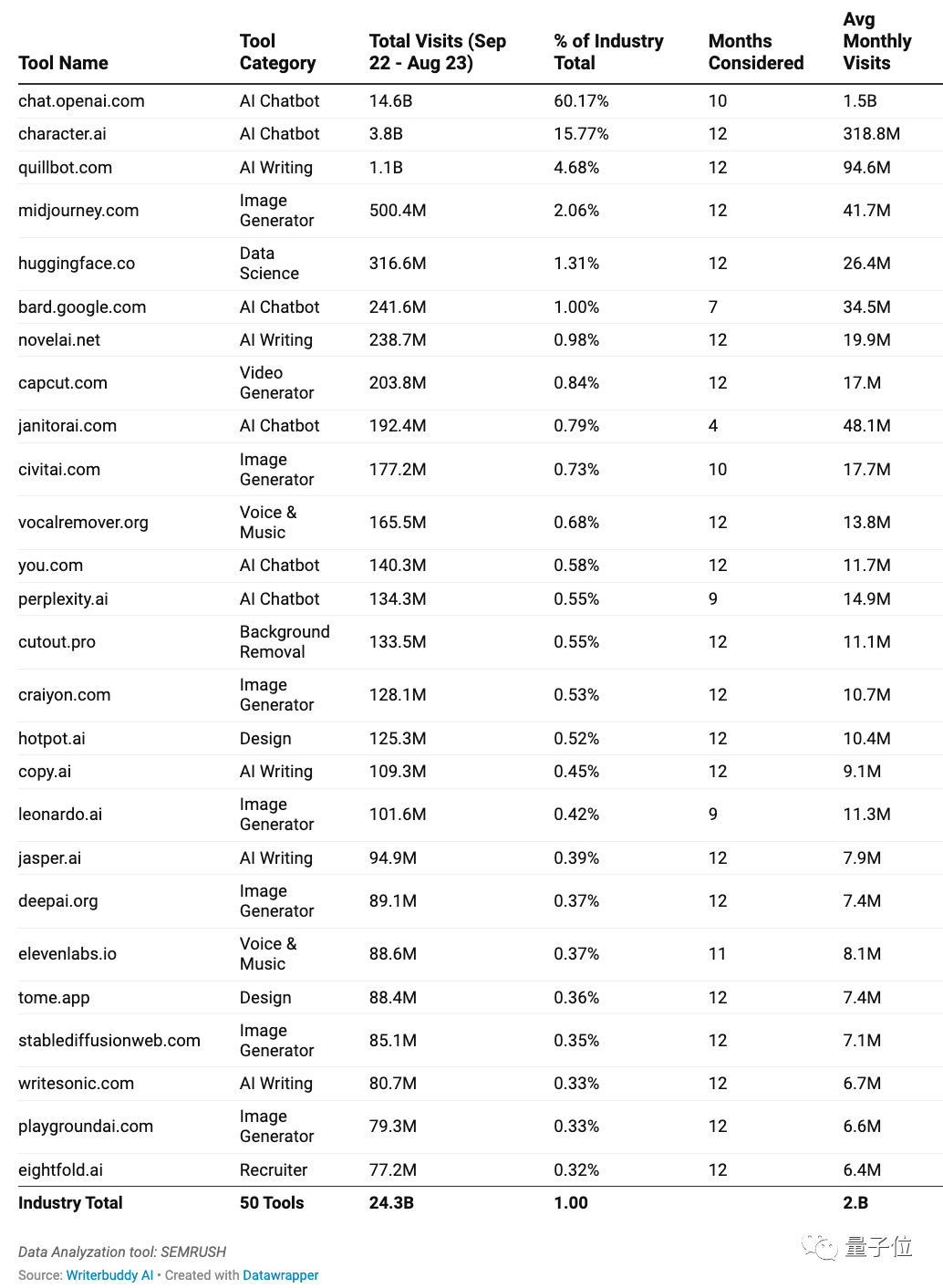
ChatGPT unsurprisingly claimed the top spot.
Within 10 months of its release, it generated 14.6 billion visits, accounting for 60% of the total visits to all listed AI services. By August 2023, it still maintained 1.5 billion visits, nearly five times that of the second-place contender.
In the entire AI chatbot classification, its total traffic share reaches 76.31%.
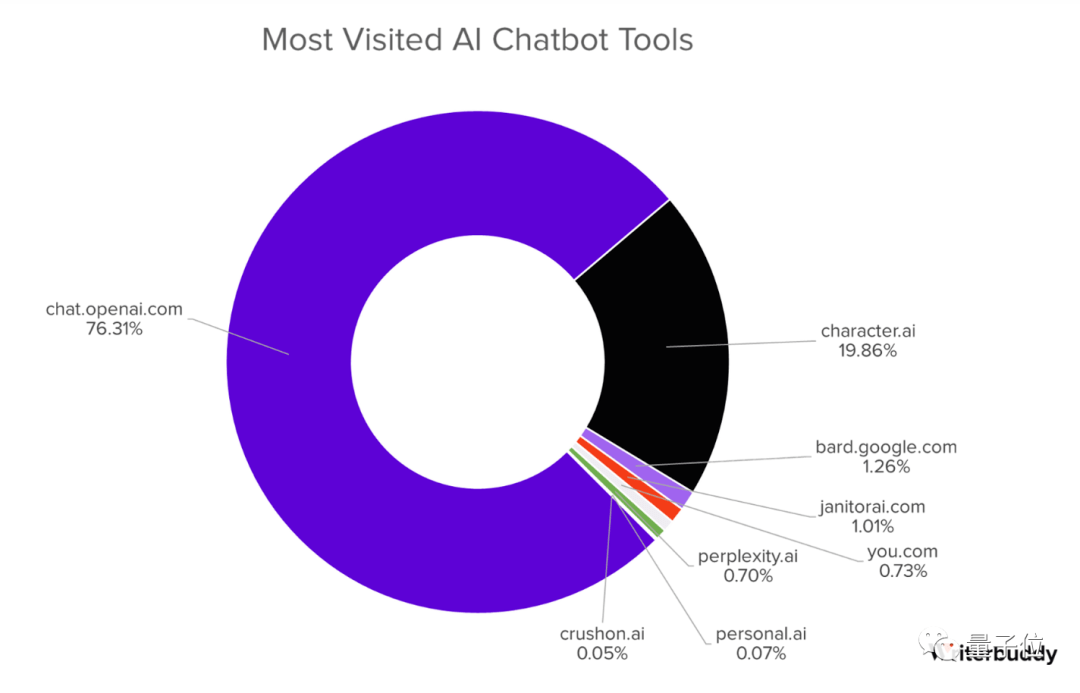
Relatively speaking, the competition for second place might be more intense.
Character.ai occupies this position with a total of 3.8 billion visits (during the survey period).
Like ChatGPT, it is an AI chatbot. Its distinctive feature is providing dialogue bots with different characters. Users can create a character AI and share it with the community, allowing anyone to converse with this AI.
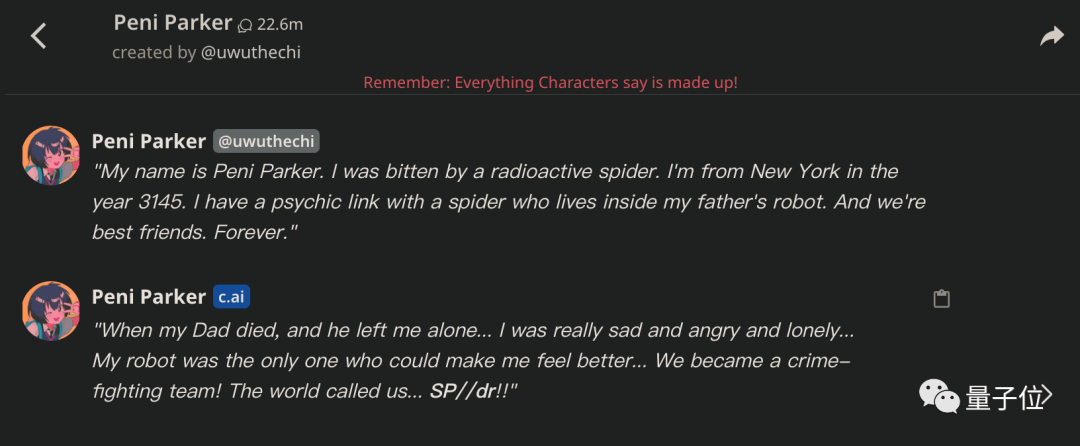
Ranking third is Quillbot, which focuses on data analysis and is geared towards office application scenarios.
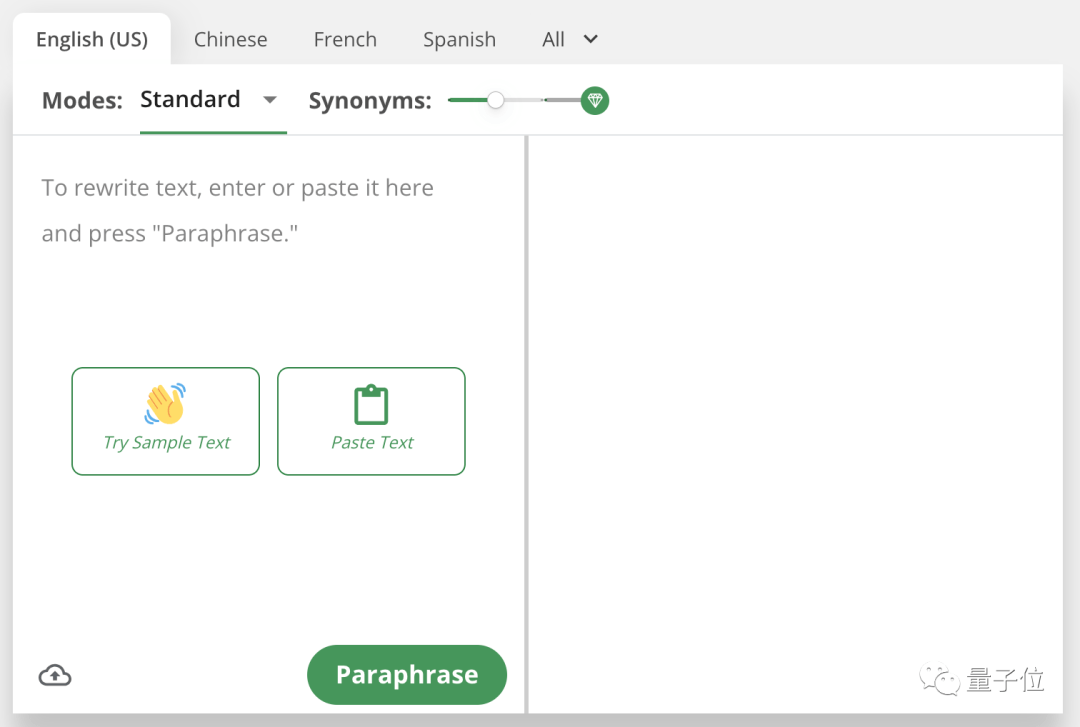
The top three tools can all be used for free, and Character.ai and Quillbot can even be used without registration.
In fourth place comes the image generation tool Midjourney.
Ranking fifth is HuggingFace.
Google's Bard follows closely in sixth place, while Stable Diffusion, which set the trend for AI painting, has been surpassed by many "newcomers" and ranks outside the top 20.
The traffic leader in the video generation field is CapCut, ranking 8th.
Runway is positioned at 29th place.
Other notable AIGC startups include Jasper.ai at 19th place, while Claude - often considered ChatGPT's strongest competitor - surprisingly ranks near the bottom in terms of traffic.
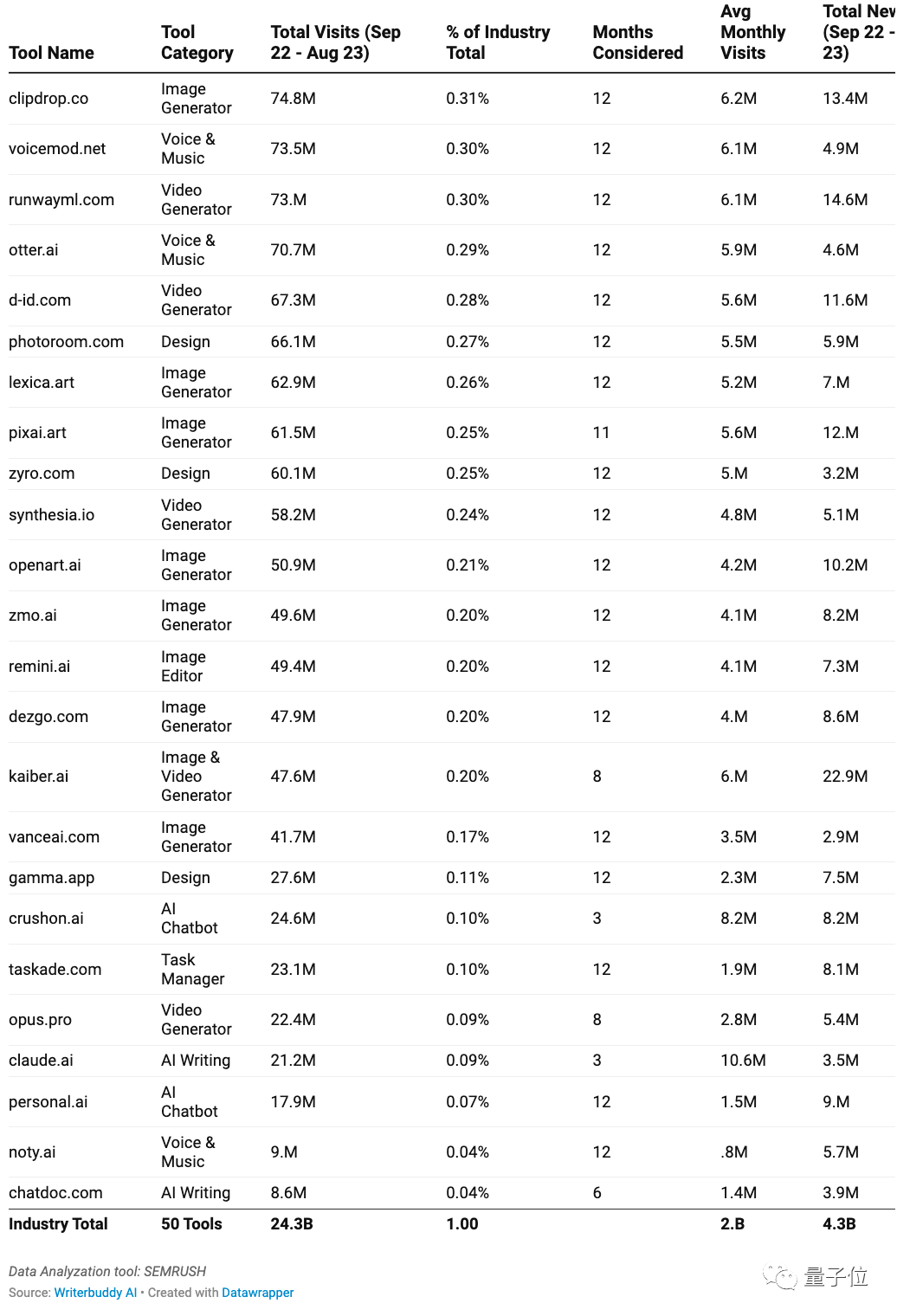
However, high traffic doesn't guarantee ultimate success.
For instance, Character.ai leads in average user session duration. While Midjourney has high total traffic, it also experienced significant churn - losing 8.66 million visits during the survey period.
For more specific data, Writerbuddy offers some references.
In terms of average user session duration, the top-ranked tools are those providing immersive experiences or featuring complex operations.
The duration gap between similar tools isn't significant. For instance, ChatGPT and Bard show average session durations around 10 minutes, while Stable Diffusion and Midjourney rank closely together.
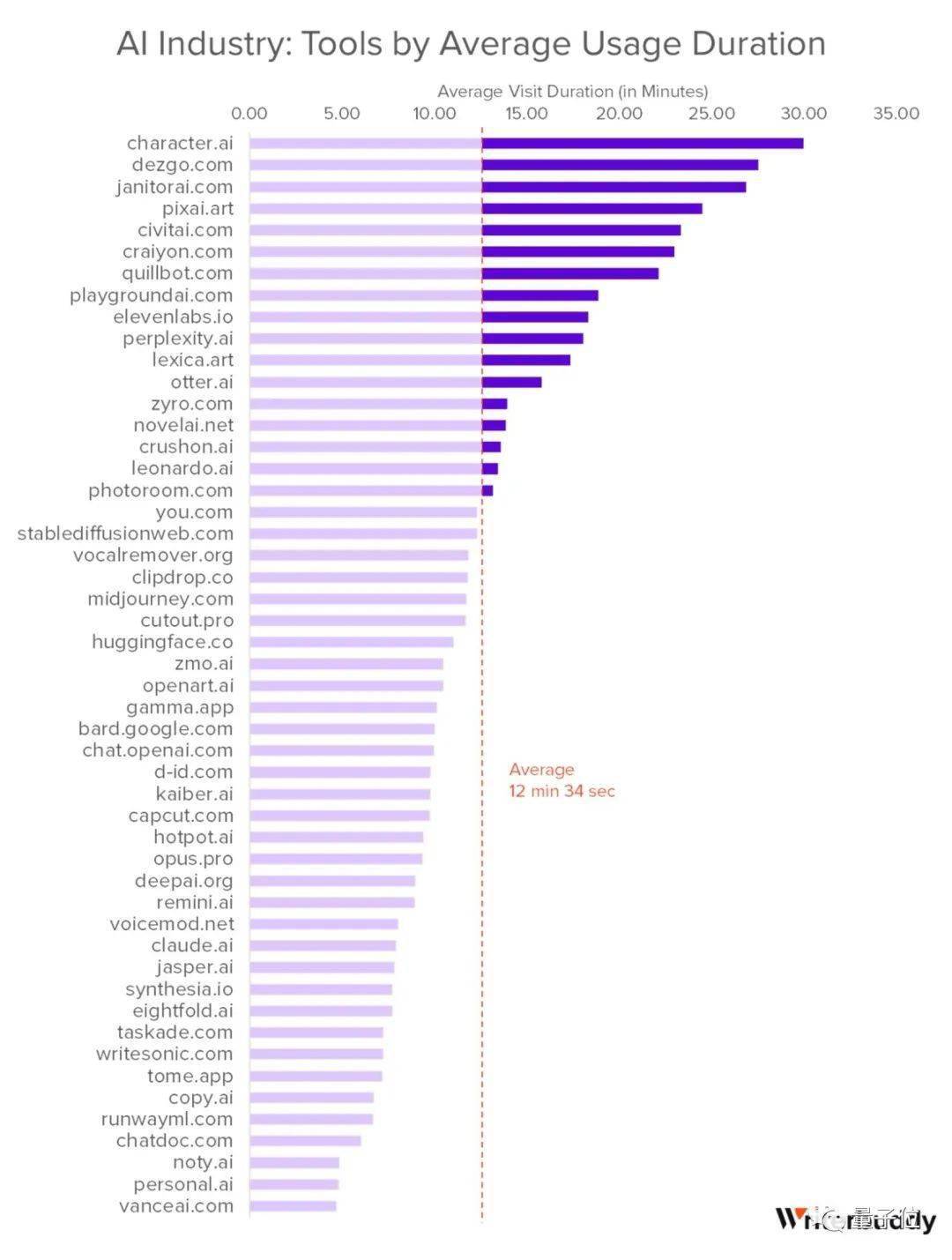
Regarding net growth, the top three positions are occupied by ChatGPT, Character.ai, and Bard.
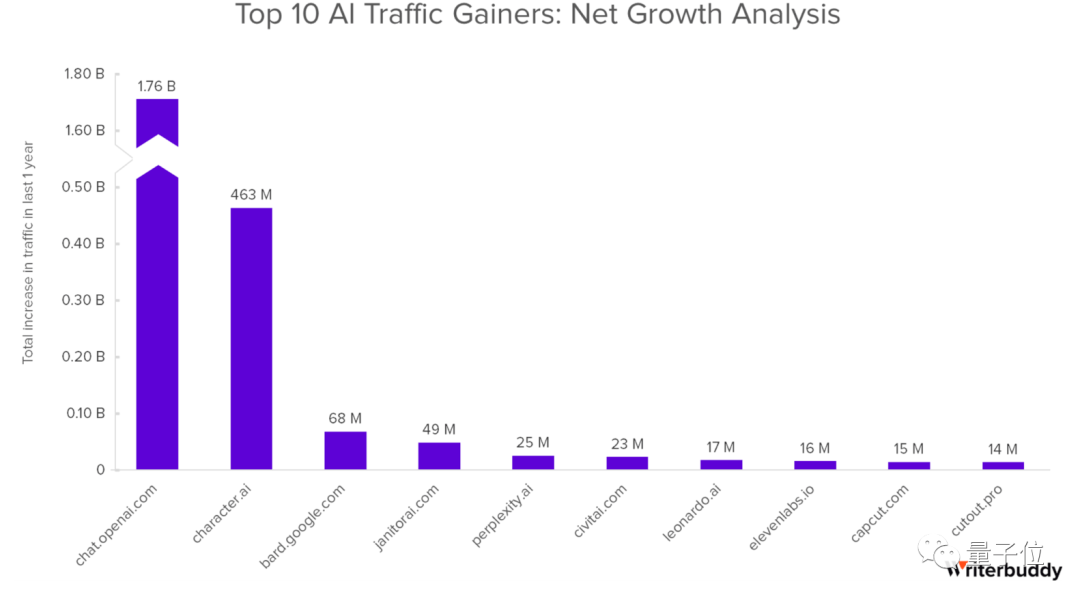
The top five AI tools with the highest traffic loss are Craiyon, Midjourney, Quillbot, Jasper, and Zyro.
The first two are image generation tools, including the highly popular Midjourney.
Quillbot and Jasper, as text-generation AIs, were both developed before the latest trend in large models. Their traffic loss may be attributed to intense competition.
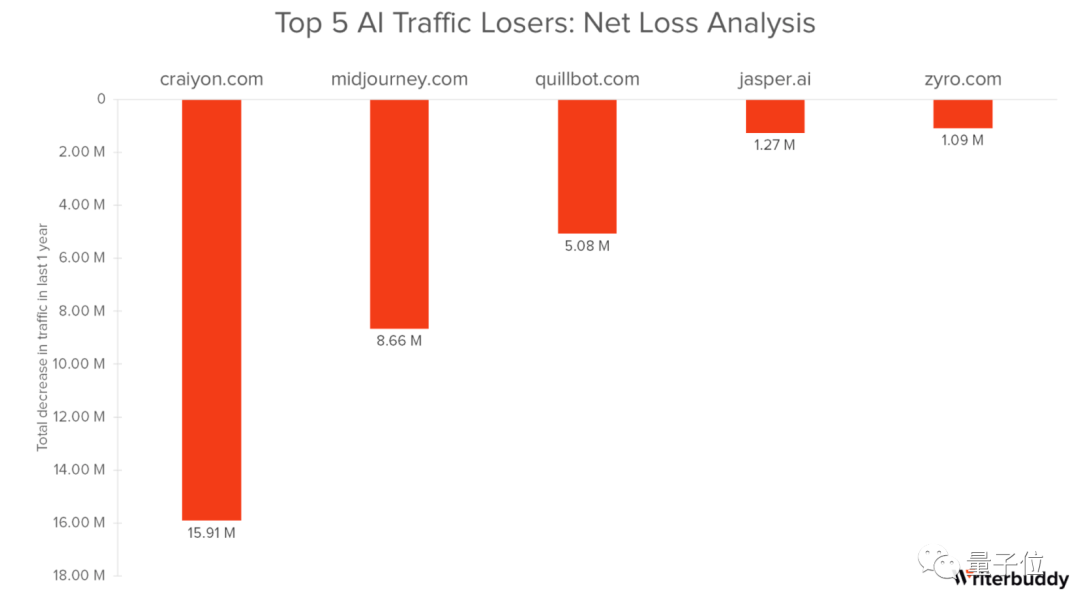
By analyzing the total traffic of these 50 tools, we can observe some emerging trends.
Since the release of ChatGPT in November 2022, traffic surged, peaking in May 2023, after which it began to decline.
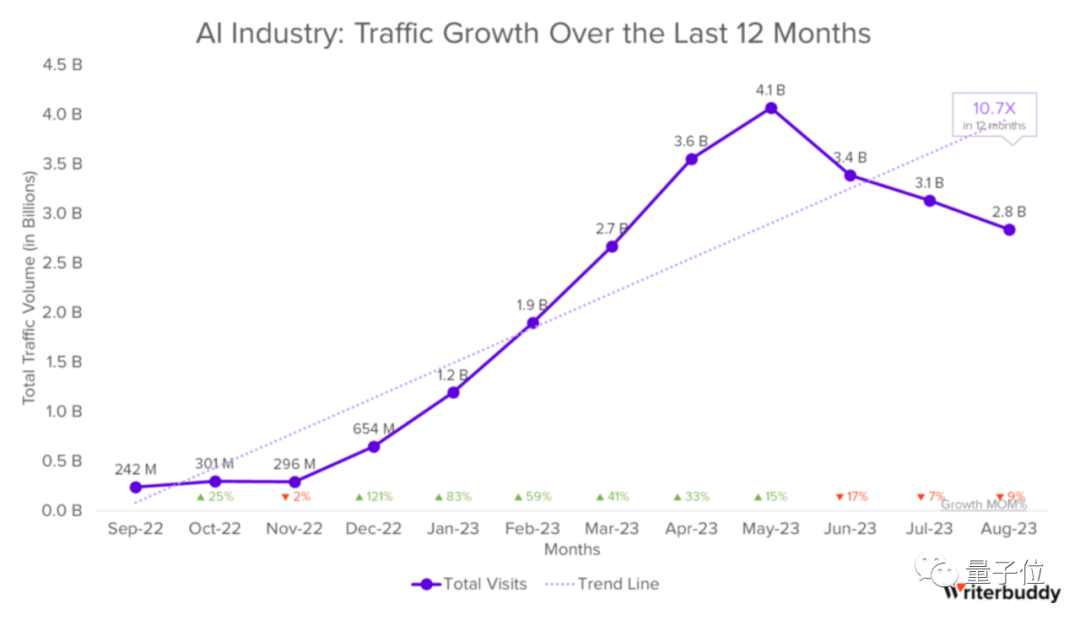
There can be several explanations for the downward trend:
It's worth mentioning that the report shows over 60% of users prefer accessing AI tools through mobile devices like smartphones.
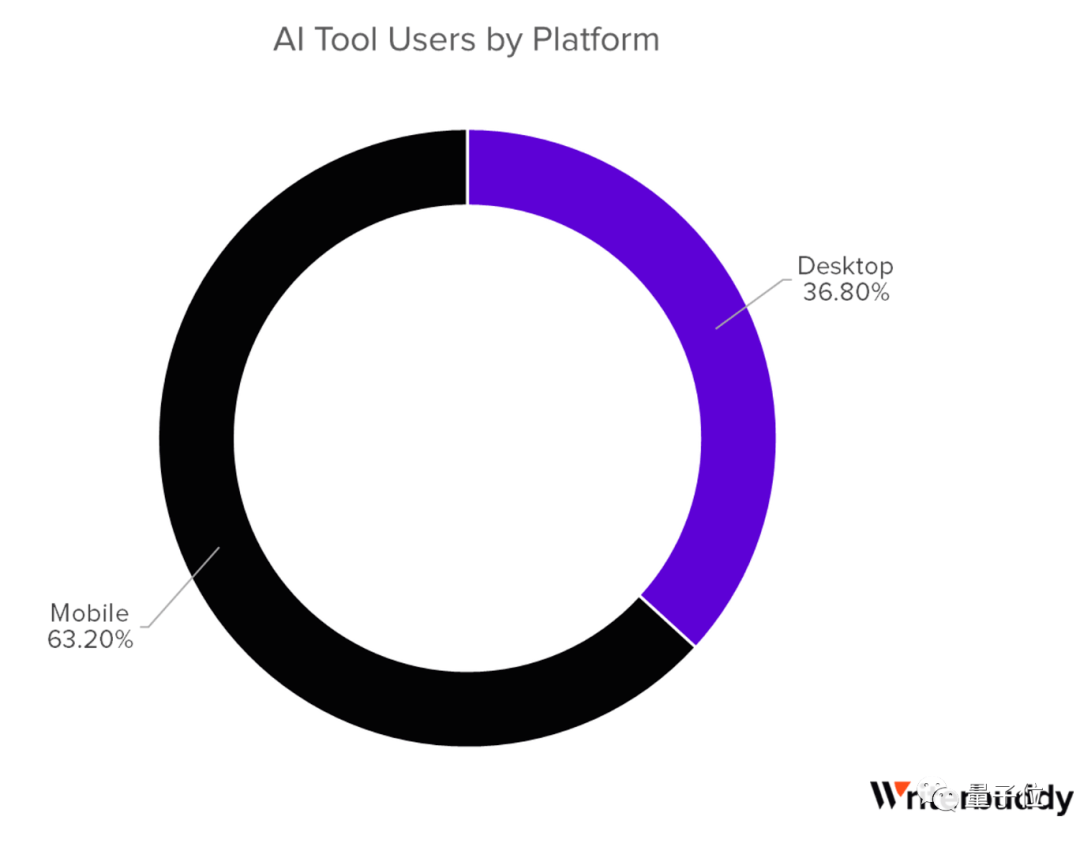
Among the top 50 popular tools, the most represented category is image generation, followed by AI chatbot tools.
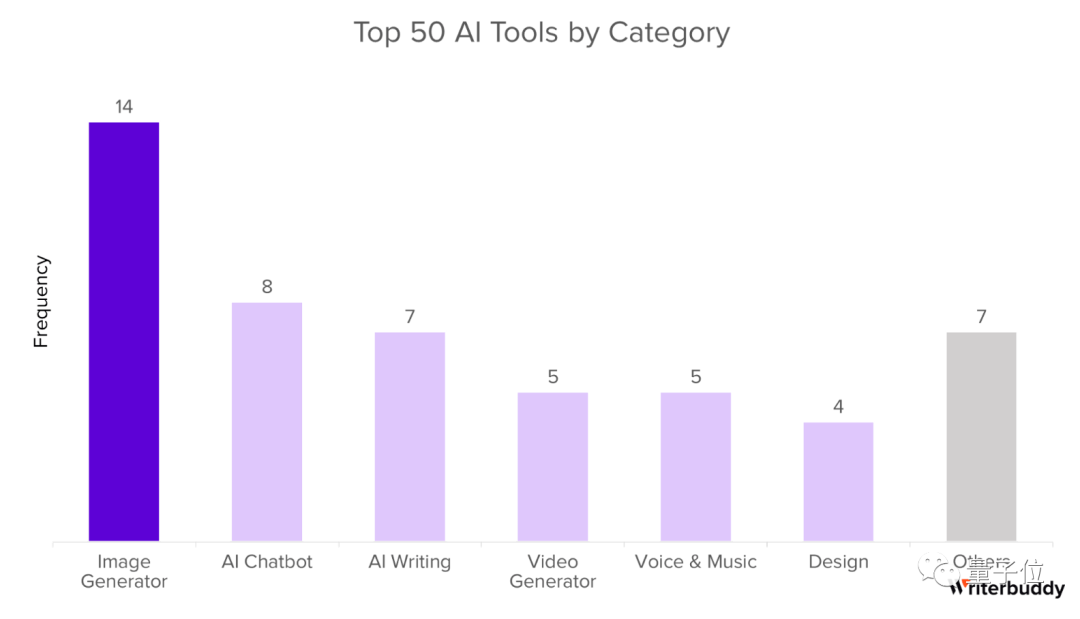
Relatively speaking, this report provides more of a data-driven perspective on trends.
More specifically, what were the notable events worth marking in 2023?
A summary starting from March 2023 complements the above report, offering a more comprehensive and objective reference.
2023: The Year of AI
A statistical report from Everypixel Journal outlines significant events in the AI industry from March to December 2023.
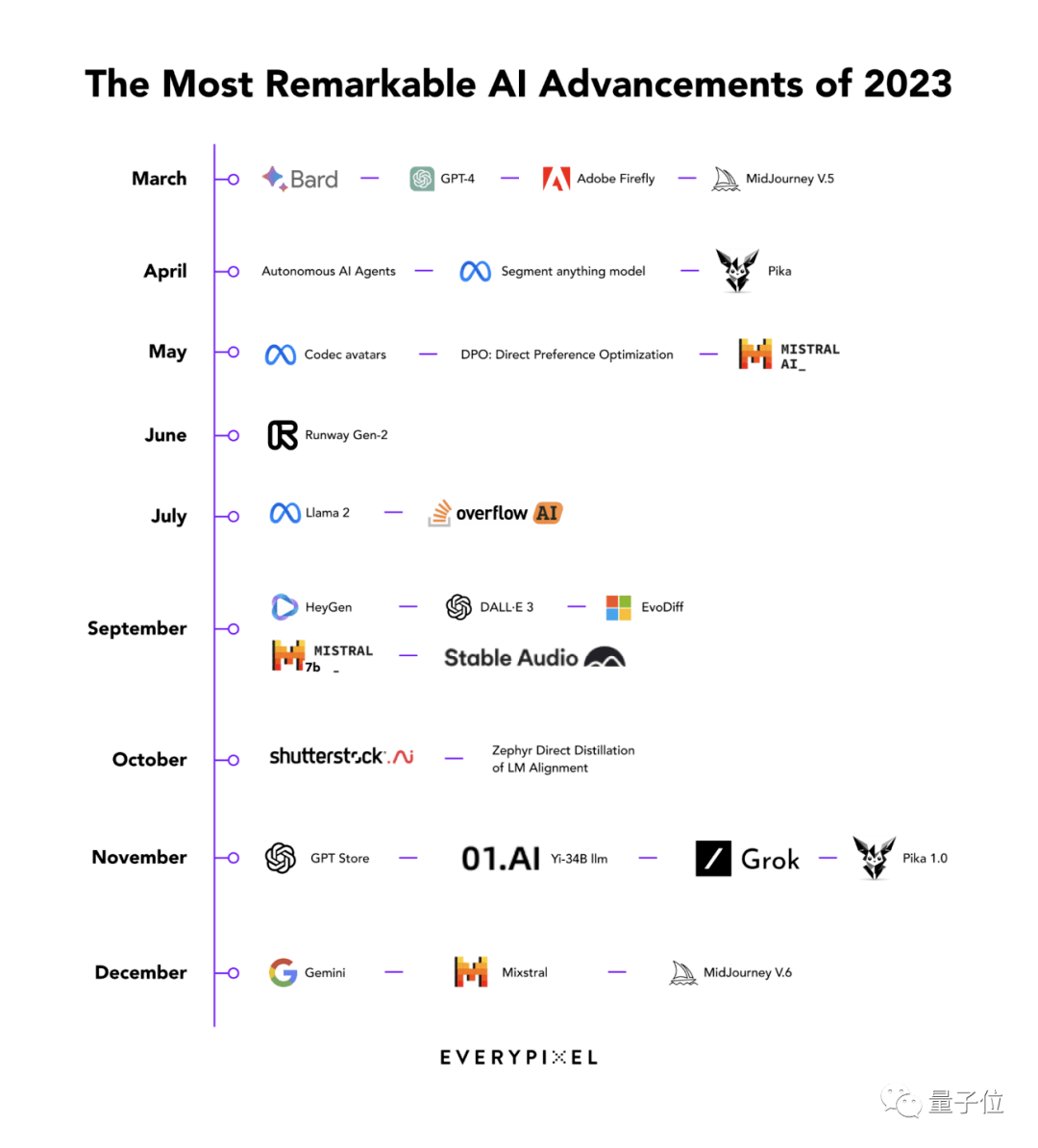
It categorizes the explosive growth of AI tools this year into three main types: text, image, and video generation.
Text Generation Tools
Why start looking from March?
Probably because this month saw the release of GPT-4 and Bard, pushing the trend of large models to new heights.
This aligns with Writerbuddy's data, showing that from March to April 2023, the total visits to the top 50 AI tools increased by 900 million, marking the fastest growth period in the survey.
The capabilities of AI chat bots also began to extend in various dimensions from this point.
Among them, Google's Bard was trained using multimodal datasets. After its release, GPT-4 continuously updated, expanding features like plugins, internet connectivity, voice support, and image generation.
On another front, Meta released the open-source large model Llama 2, sparking a wave of Alpaca variants and invigorating the open-source community.
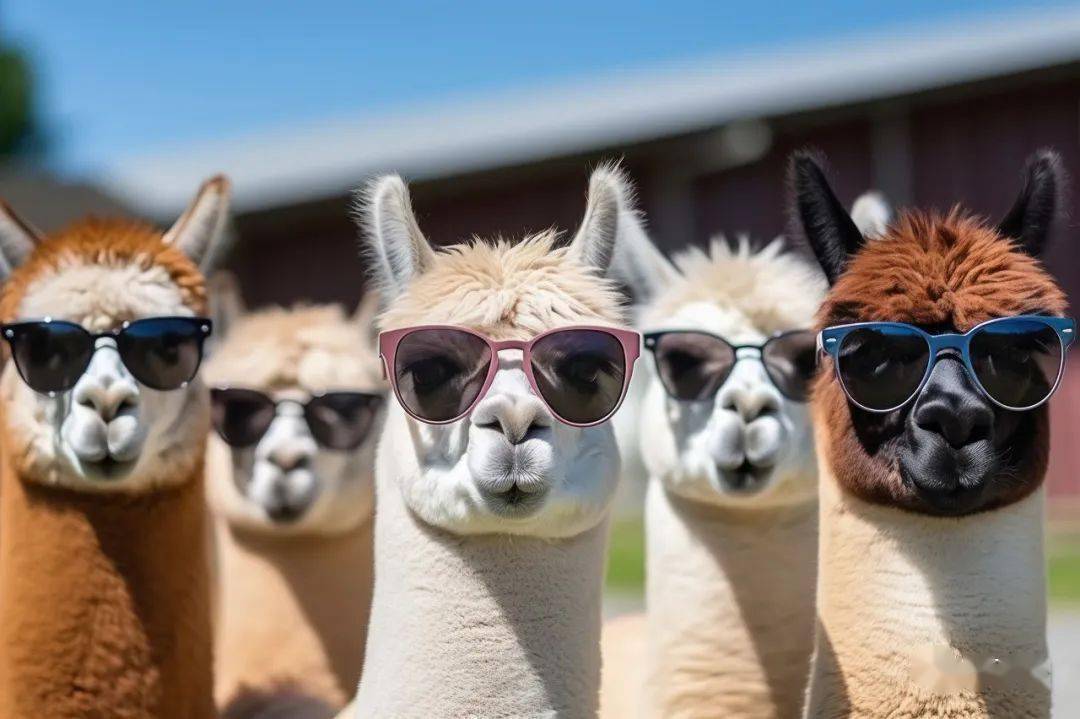
Additionally, developer platform Stack Overflow introduced OverflowAI, which supports AI-driven search, enabling developers to easily find the information they need in Visual Studio Code and Slack.
Another notable open-source model is Mixtral 7B by Mistral AI, ranking among the strongest open-source foundational models and capable of competing with 13B and 34B models. Zephyr-7B-beta, fine-tuned from Mistral-7B, has also become the only 7B model to top multiple evaluation leaderboards.
Furthermore, in November, Yi-34B by 01.AI, founded by Kai-Fu Lee, achieved a 94.08% win rate in Alpaca's certified model category, surpassing LLaMA2 Chat 70B, Claude 2, and ChatGPT.
Elon Musk's new company xAI, established in July, released its first large-scale model Grok, which is said to be capable of accessing data from the X platform in real-time.
The year-end was particularly significant with Google's release of Gemini, touted as the closest competitor to ChatGPT in terms of performance.
Following this, Mistral AI launched Mixtral 8x7B (7B parameters x8 experts) at the end of the year, marking the first open-source MoE large model. The MoE architecture is rumored to be the same approach used in GPT-4, making this the closest open-source model has come to GPT-4.
Image Generation Tools
2023 saw intense competition in the field of image generation.
In March, Adobe Firefly was released, integrating into Photoshop, with text effects being a major highlight.
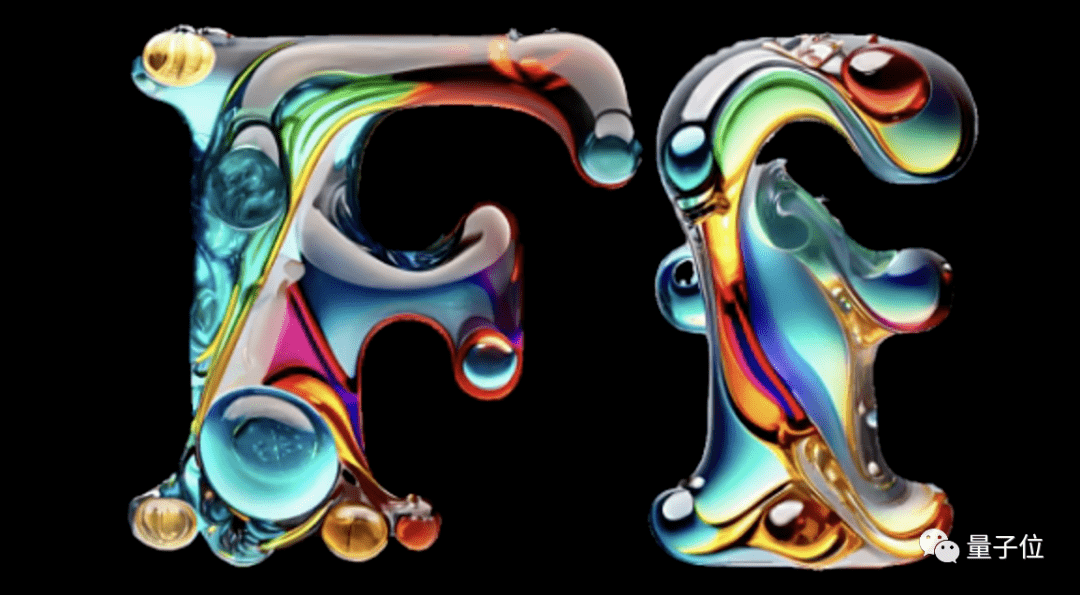
Midjourney has released its V5 version, improving image generation efficiency, coherence, and resolution. Recently, the V6 version was also launched, bringing five major upgrades and supporting simple text-to-image generation.
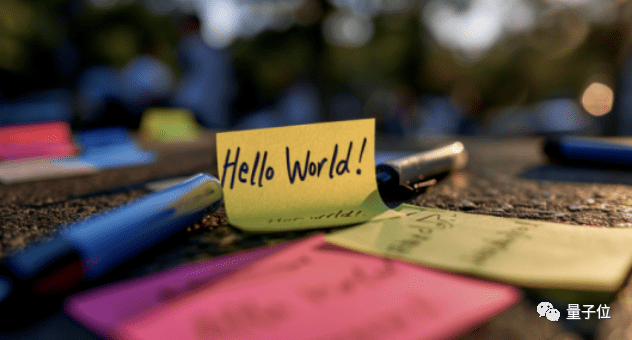
Another notable tool is ChatGPT's image-generation partner, DALL·E 3. Unlike other models, DALL·E 3 eliminates the need for complex prompt engineering, simplifying image creation. It can also refine prompts and adjust images based on user feedback.
Stock photo platform Shutterstock has also introduced AI-powered features, allowing users to generate new content with AI or perform simple edits and transformations on existing images.
The field of image generation has evolved significantly. Below is a comparison between text-to-image generation in 2007 and 2023:
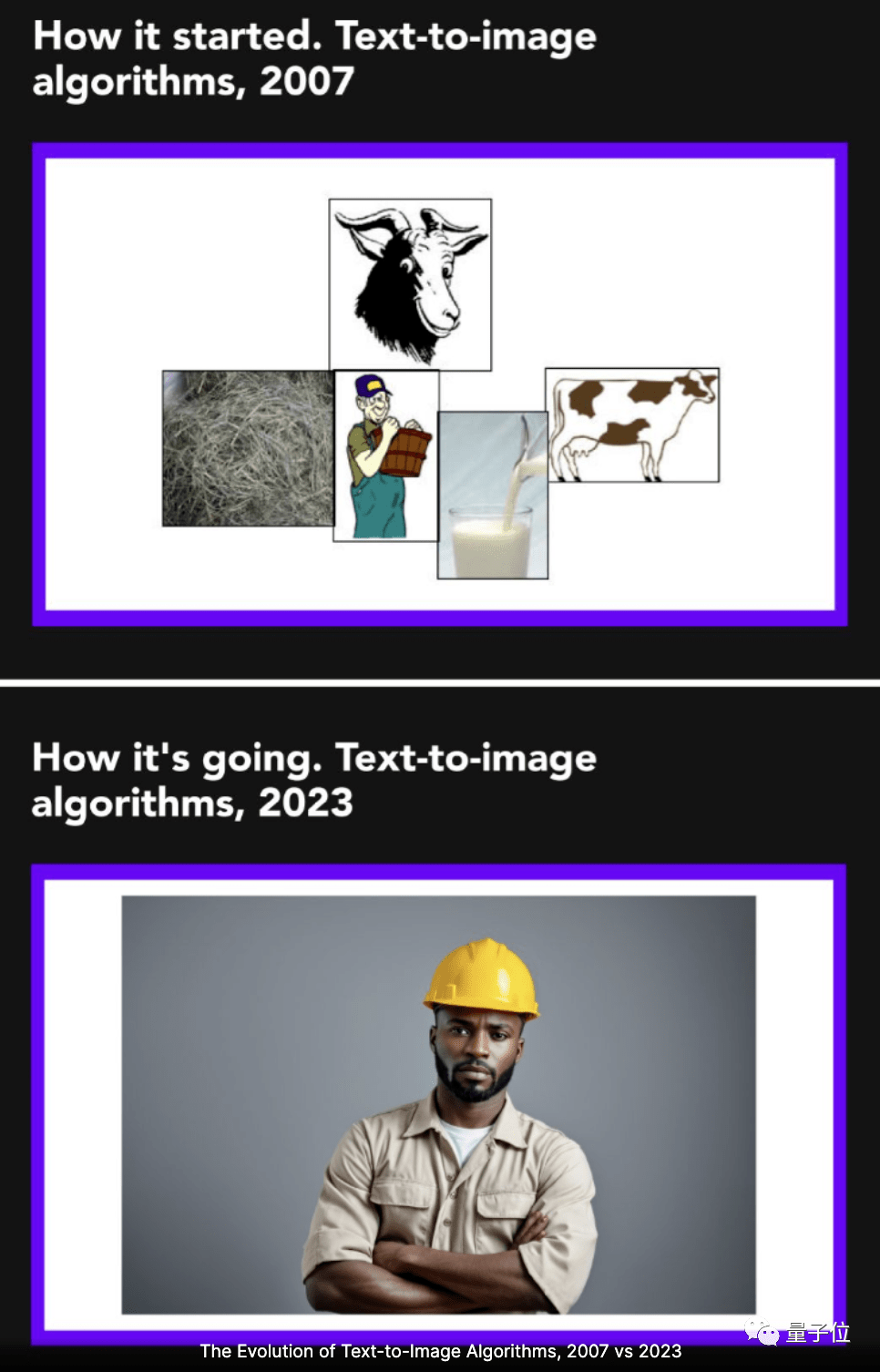
Video generation tools
Video generation capabilities underwent remarkable changes in 2023.
Pika attracted 500,000 users immediately upon its initial release, generating millions of videos weekly. By year-end, the Pika 1.0 upgrade enabled users to create and edit videos in various styles including 3D animation, anime, cartoons, and cinematic formats.
Meta introduced Codec Avatars, a model specializing in 3D facial generation within videos.
Runway's Gen-2 dramatically elevated video quality to ultra-realistic 4K resolution, achieving this effect with just simple text prompts.

HeyGen has launched an AI portrait video tool that includes over 100 digital human assets and templates, supporting more than 300 different voice tones and 40+ languages. With just three simple steps—selecting an avatar, writing the text, and waiting for the output—you can make Taylor Swift naturally speak Chinese.

Additionally, Stability AI has introduced its own video generation tool, Stable Video Diffusion, which not only supports text-to-video and image-to-video generation but also enables the transformation of objects from a single perspective to multiple perspectives.
In summary, this year has seen intense competition across various fields of AIGC (AI-generated content). However, there have also been some significant collaborations in the industry worth noting.
First, major collaborations among industry leaders.
Stability AI & Init ML
Stability AI acquired the core team behind the image processing application ClipDrop, Init ML, integrating Stability AI into ClipDrop's ecosystem and facilitating the development of SDXL Turbo.
Runway & Getty Images
Runway partnered with Getty Images to launch a new video generation model, RGM, combining Runway's AI capabilities with Getty Images' creative content library. This collaboration transforms the content creation process, enabling companies to generate high-quality, customized videos based on their brand image.
Snowflake & Neeva
Data warehouse platform Snowflake has acquired Neeva, a startup that uses generative AI tools to enhance search experiences. Neeva recently shut down its ad-free search engine.
Shutterstock&OpenAI
Shutterstock and OpenAI have established a 6-year partnership, with Shutterstock providing OpenAI with high-quality datasets including images, videos, and music libraries.
The entire artificial intelligence industry also experienced some milestone events in 2023.
The most notable developments were in the legal domain. AI giants like OpenAI have been embroiled in rights disputes, which has accelerated the progress of AI-related legislation.
For example, the European Parliament, the European Council, and the European Commission reached an agreement on the "Artificial Intelligence Act." This legislation will become the world's first comprehensive regulatory framework in the field of artificial intelligence.
The US Copyright Office has clarified its stance on AI-generated content. It refuses to register copyright for AI-generated images.
Meanwhile, countries around the world are actively introducing policies and regulations to govern AI.
Finally, the report also lists some industry hot topics.
Three of them are related to OpenAI. They are:
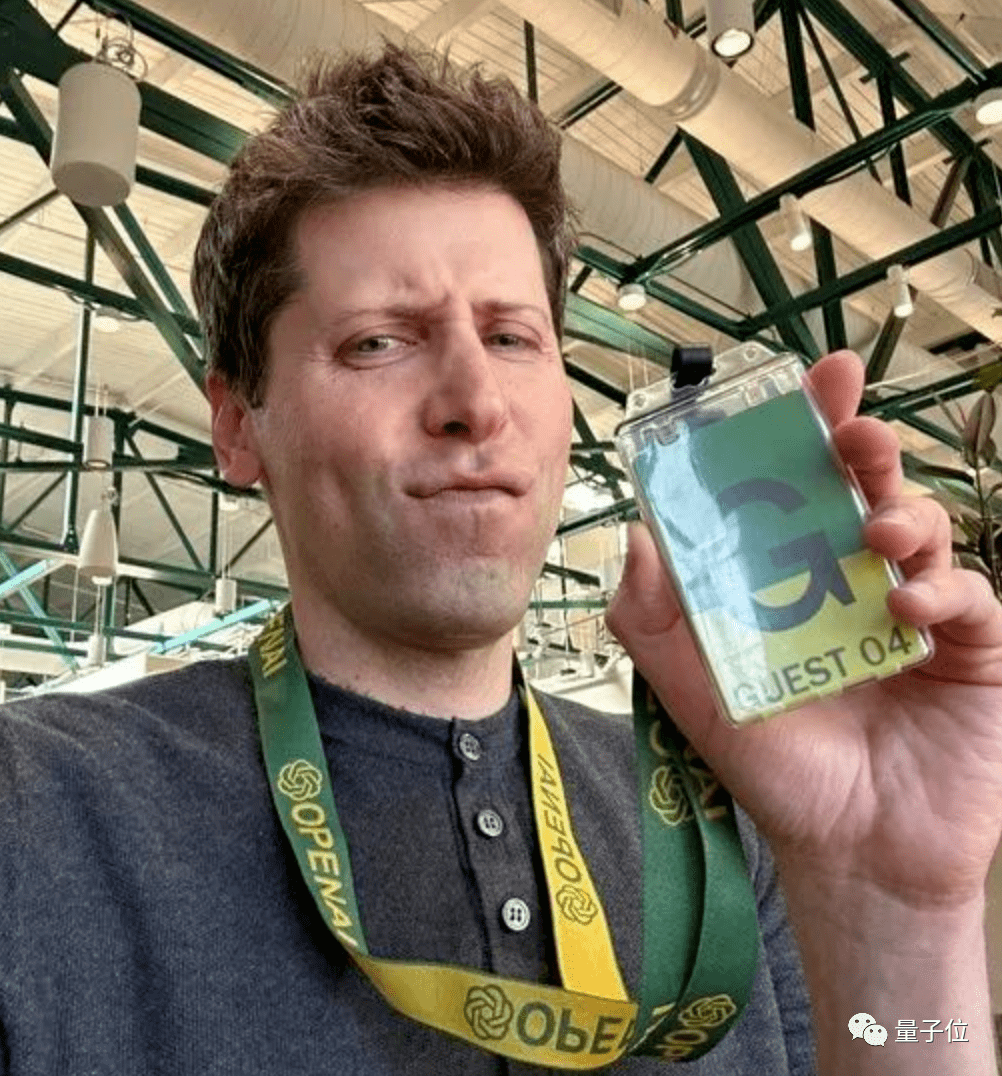
Additionally, the report also highlights the incident where the 2023 Sony World Photography Awards were given to an AI-generated work. At the time, the creator refused to accept the award, sparking intense discussions about AI-generated creations.
In the past year, the AI industry has witnessed the birth of many new things and unprecedented major events.
Through these, we can better understand 2023 and also have a clearer vision for the already arrived 2024.
In the past year, what was your most frequently used AI tool? And what was the most impressive major event in the AI circle?
